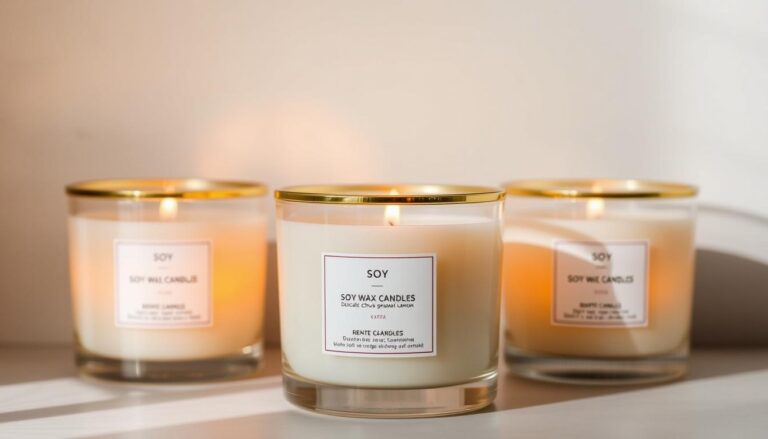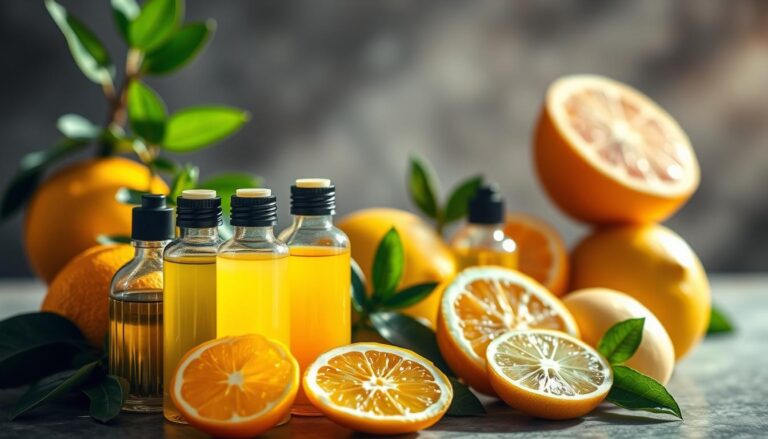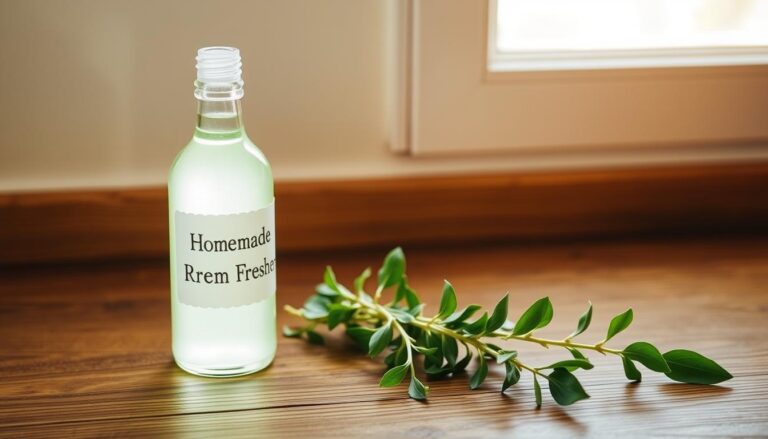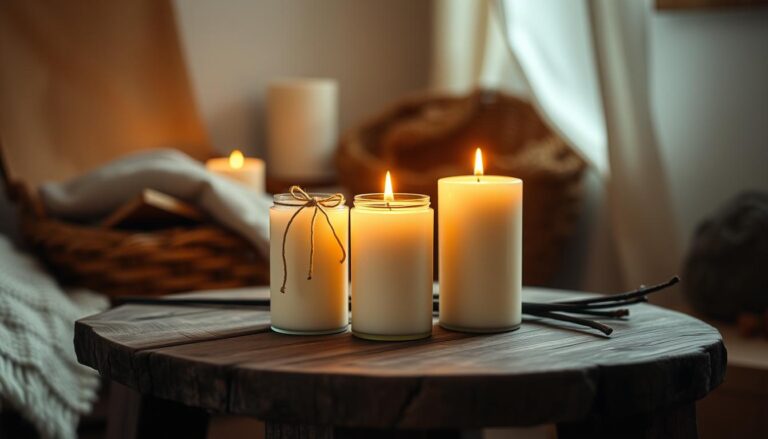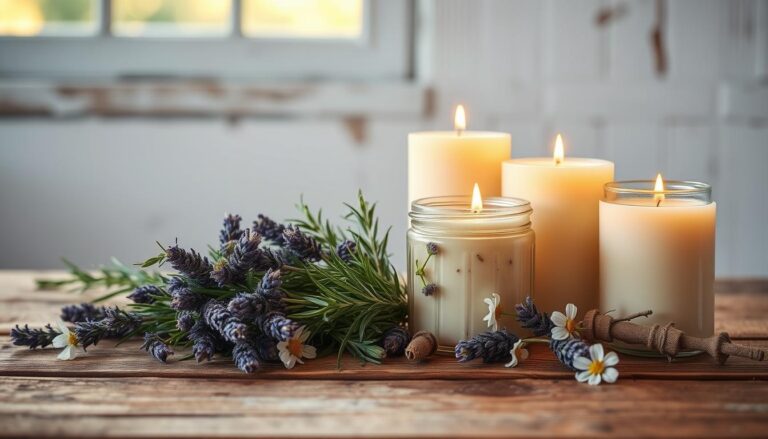Have you ever wondered how plant extracts can enhance your wellness routine? That’s exactly what we will cover in the “Essential Oil for Beginners” article.
Essential oils are natural aromatic compounds that get created by steam distillation or cold pressing of flowers, leaves, and other plant parts.
Their concentrated formulas capture the essence of the source, offering distinct scents and potential benefits.
For centuries, cultures worldwide have turned to these plant-based solutions. Ancient Egyptians used them in rituals, while traditional Chinese medicine incorporated them for holistic healing.
Modern users appreciate their versatility in supporting relaxation, focus, and emotional balance.
Starting your journey doesn’t require special expertise. Simple methods like diffusing or topical blends (when properly diluted) let you experience their properties safely.
We’ll walk through 7 accessible techniques that fit seamlessly into daily life, from creating calming atmospheres to enhancing self-care rituals.
Key Takeaways
- Plant extracts capture natural aromas through steam or cold-press methods
- Historical use spans multiple cultures over thousands of years
- Each variety offers unique scent profiles and potential wellness benefits
- Beginner-friendly applications require minimal equipment or experience
- Proper dilution ensures safe topical use
Getting Started with Essential Oils for Beginners
Unlock the power of plants with these concentrated extracts. Their potent formulas have shaped wellness practices across civilizations, offering natural solutions for modern lifestyles.
Let’s explore how they work and why they’ve remained popular for millennia.
What Are These Natural Extracts?
Distilled from flowers, leaves, or bark, these liquids capture a plant’s signature fragrance and properties. Steam or cold pressing removes water and waste, leaving pure aromatic compounds.
For example, it takes 220 pounds of lavender blooms to produce a single pound of this fragrant liquid.
Three varieties stand out for newcomers:
- Lavender calms nerves before bedtime.
- Peppermint sharpens focus during afternoon slumps.
- Tea tree tackles skin concerns with natural cleansing power.
Timeless Uses and Modern Advantages
Ancient Egyptians preserved mummies with plant resins, while Greek athletes massaged with herbal blends.
Today, science explains how inhaling scents activates brain regions linked to mood and memory.
Different plant parts create unique effects. Citrus peels uplift spirits, while woody barks ground emotions.
This diversity lets you tailor blends to your needs, either for boosting energy or winding down.
7 Easy Ways to Incorporate Essential Oils into Your Daily Routine
Transform your daily habits with plant-powered solutions that blend seamlessly into your existing schedule.
These methods require minimal effort but deliver maximum impact through targeted applications.
Breathing New Life into Spaces
Electric diffusers turn water and 3-5 drops of your favorite blend into an aromatic mist.
Try peppermint during work hours to boost concentration or blends including lavender before bed to encourage relaxation.
For instant relief, inhale directly from the bottle or dab a drop on a tissue.
Portable inhalation sticks let you take scents on-the-go. Keep a peppermint roller in your bag for stressful commutes or to use after intense workouts.
This method delivers quick effects without overwhelming your senses.
Craft Your Natural Solutions
Mix 10 drops of tea tree with water and vinegar for a multipurpose cleaner that tackles kitchen surfaces.
Combine coconut oil with lavender for a soothing body balm. Always dilute concentrated formulas before skin application.
Create personalized skincare by adding 2-3 drops to unscented lotions. For a refreshing foot soak, blend epsom salts with peppermint.
These projects let you control ingredients while avoiding harsh chemicals.
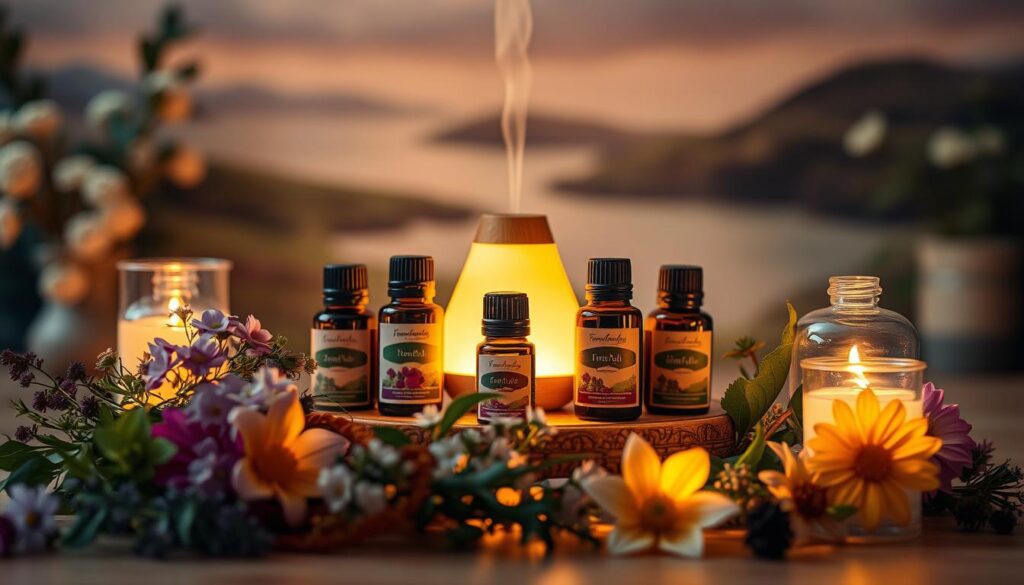
Understanding the Benefits and Science Behind Essential Oils
Your nose knows more than you think. When you inhale plant essences, scent receptors send signals through your nervous system to the brain’s limbic system.
This area controls emotions and memories, creating immediate responses to different aromas.
Therapeutic Properties and Aromatherapy Insights
Citrus scents like lemon can lift your mood within minutes. Studies show people exposed to lemon aroma reported 35% more positivity than those smelling lavender.
Floral options work differently—lavender’s calming effects make it popular for bedtime routines.
Here’s how specific types support wellness:
- Citrus (lemon/orange): Boosts energy and focus
- Floral (lavender/chamomile): Promotes relaxation
- Woody (cedar/pine): Creates grounding effects
Research and Evidence-Based Benefits
A review of 15 sleep studies found inhaled plant extracts helped 78% of participants fall asleep faster.
Lavender showed consistent results, reducing nighttime wakefulness by 20% in clinical trials.
Lab tests reveal surprising antibacterial power. Certain blends combat tough strains like MRSA as effectively as some antibiotics.
While promising, researchers emphasize using these as complements, not replacements, for medical treatments.
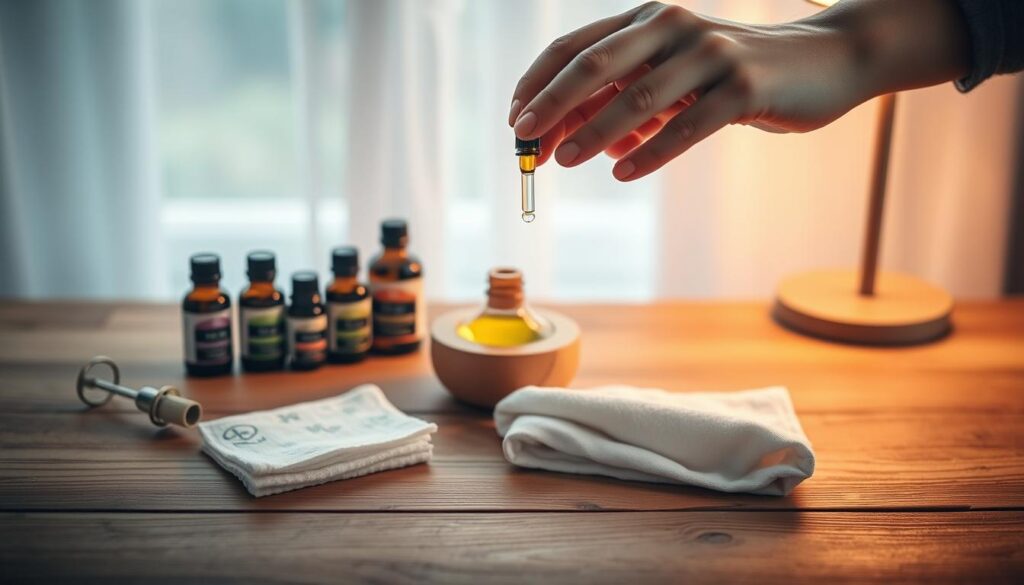
Safe Usage and Dilution Techniques for Essential Oils
Safety forms the foundation of any plant-based wellness practice. Proper techniques ensure you enjoy aromatic benefits without compromising skin health or household safety.
Let’s explore how to balance potency with protection.
Mix It Right With Carrier Bases
Pure plant extracts need dilution to work safely with your body. Carrier bases like coconut or jojoba oil act as buffers, reducing irritation risks while enhancing absorption. Follow the 1-2-3 rule for different needs:
| Dilution % | Drops per Teaspoon | Best Uses |
|---|---|---|
| 1% | 1 drop | Facial care, children 6+ |
| 2% | 2 drops | Daily massage blends |
| 3% | 3 drops | Muscle discomfort areas |
Test new blends on your inner arm first. If redness appears, wash with soap and water immediately.
Keep a bottle of carrier oil nearby to dilute accidental over-application.
Special Considerations for Families
Certain plant extracts can overwhelm young systems. Avoid peppermint near children under six, and never use tea tree around pets.
Store bottles in locked cabinets away from curious hands and paws.
Pregnant individuals should consult healthcare providers before using citrus or floral scents. For sensitive skin, almond oil makes an ideal carrier base due to its gentle properties.
Always avoid applying near eyes or broken skin.
How to Choose High-Quality Essential Oils
Quality matters when selecting plant-based extracts. Start by researching brands that share detailed sourcing practices.
Ethical companies often partner directly with farmers and disclose harvest locations.
Spotting Authentic Products
Look for Latin names like Lavandula angustifolia on labels. This confirms you’re getting true lavender oil.
Reputable sellers provide batch-specific GC/MS reports online.
These lab tests verify purity and screen for synthetic additives.
Check bottle materials too. Dark glass protects delicate compounds from light damage.
Avoid plastic containers, as concentrated formulas can degrade them over time.
Decoding Quality Markers
Third-party certifications offer extra assurance. USDA Organic seals mean no pesticides were used.
The term “therapeutic grade” isn’t regulated, so focus on verifiable data instead.
Trust your nose: authentic lemon oil should smell zesty, not chemical.
If a scent seems off or causes headaches, it might contain artificial extenders.
Always store your oils in cool, dark places to preserve their benefits.
FAQ
What exactly are these plant extracts used for?
They’re concentrated liquids derived from plants, capturing their natural scents and properties. People often use them in aromatherapy, skincare, or homemade cleaning solutions to promote relaxation, boost mood, or support wellness.
How can I safely try these aromatic extracts at home?
Start with a diffuser to enjoy their scent or mix a few drops with a carrier like coconut oil for topical use. Always patch-test new blends on a small skin area first to check for reactions.
Are there proven advantages to using these natural products?
Studies suggest certain options, like lavender or peppermint, may help reduce stress, improve sleep, or ease headaches. However, results vary, so pair them with healthy habits for best outcomes.
Can I apply them directly to my skin?
Never use undiluted versions directly! Mix with a carrier oil like jojoba or almond oil first. Sensitive areas like the face require extra caution—stick to low concentrations (1-2%).
What precautions should I take around kids or pets?
Keep bottles out of reach—some varieties are toxic if ingested. Avoid diffusing strong scents like eucalyptus near pets, and consult a vet or pediatrician before use around children.
How do I know if a product is pure and high-quality?
Check labels for the plant’s Latin name, extraction method (like steam distillation), and country of origin. Reputable brands provide third-party test results to confirm purity and potency.
Can I use them in homemade cleaning supplies?
Absolutely! Lemon or tea tree work well for DIY cleaners. Combine with vinegar or baking soda for a natural, fragrant alternative to chemical-based products.
